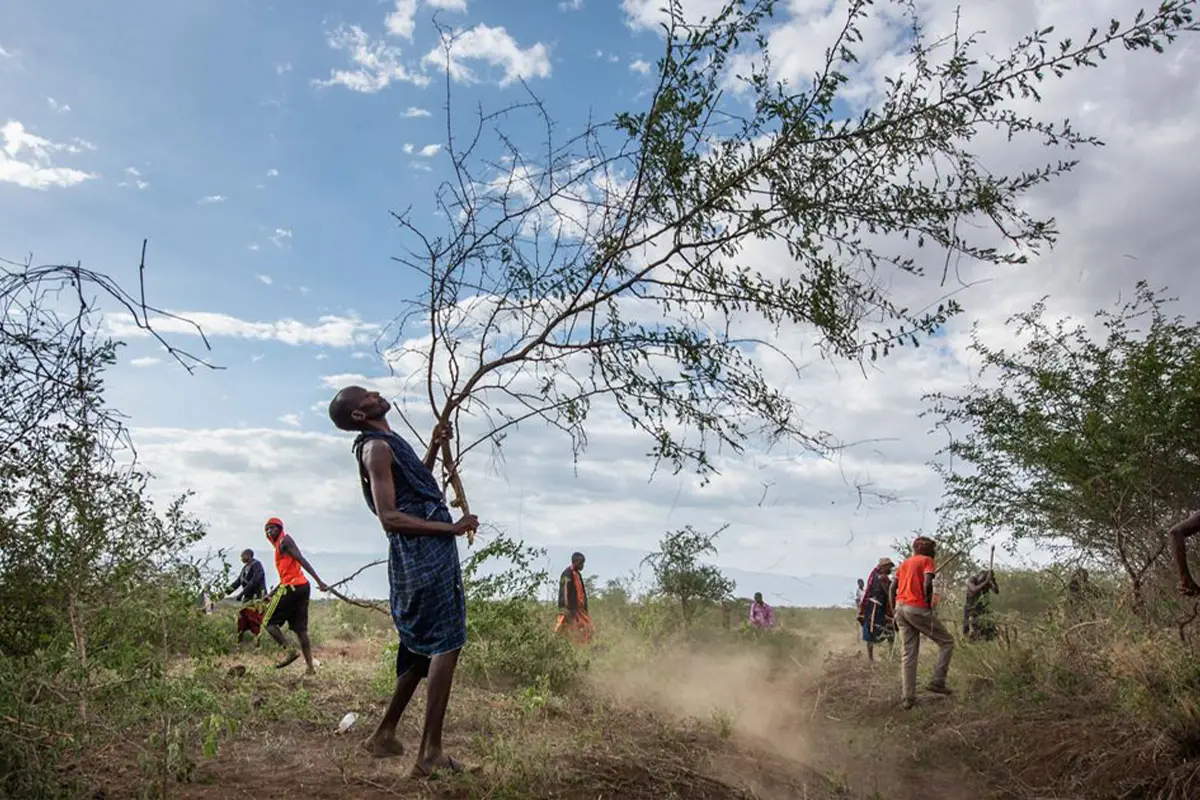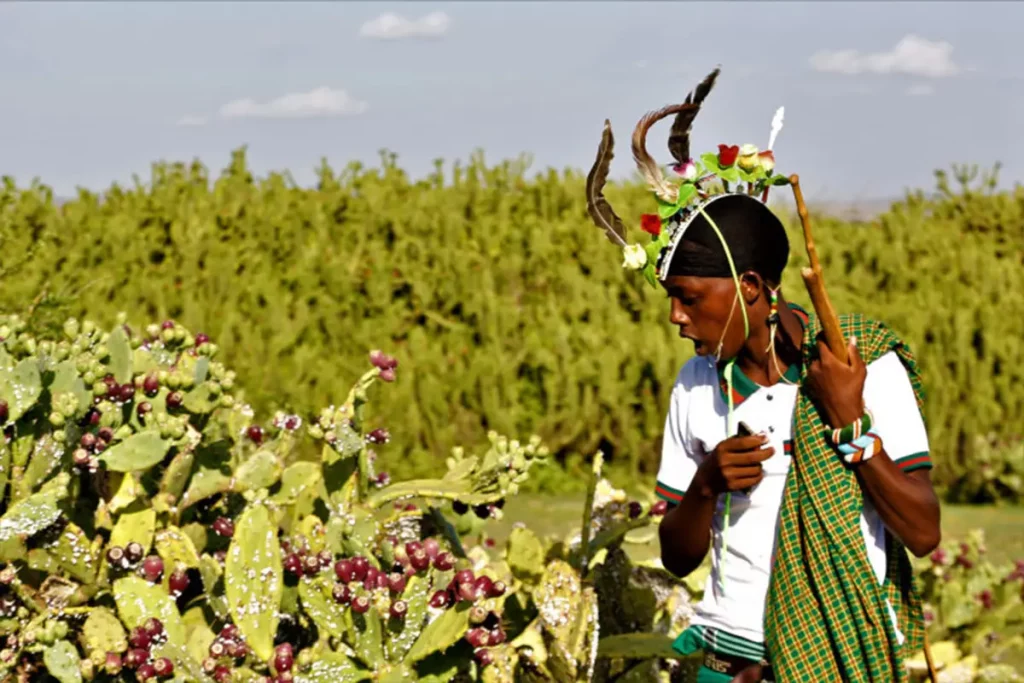The impact of invasive alien species on nature’s contribution to people is negative – especially through damage to super food – the IPBES report
The damaging effects of invading alien species in Urban Forestry and Rural Forestry– IPBES’s Invasive Alien Species Assessment report
The Bonn-based intergovernmental organization, the Intergovernmental Platform on Biodiversity and Ecosystem Services (IPBES), has released a new report titled Invasive Alien Species Assessment. This report has analyzed and quantified this impact on nature, its contributions to people, and our good quality of life.
This report was developed over four years through the work of eighty-six from forty-seven countries and 200 contributing authors and crafted through the consultation of scientific and gray literature and indigenous and local knowledge.
Invasive species definition applies to any alien species that alters or disturbs the new environments it gets to inhabit and explains how invasive species affect biodiversity. The presence of this type of species has become a global phenomenon reported in regions from the Americas and the African continent, affecting people and ecosystems. Despite being remote, like islands, or protected for environmental conservation, some unexpected locations are nonetheless susceptible to the damaging effects of invading alien species also due to biological invasions. Despite going undetected in everyday life, this phenomenon’s impact on nature and human systems is vast and tangible.
Their research showed that the cost of invasive alien species exceeded $423 billion per year in 2019, and expenses have increased by at least fourfold per decade since 1970. «Invasive alien species are a major threat to Urban Forestry and can cause irreversible damage to nature, including local and global species extinctions, and also threaten human wellbeing». said British ecologist and entomologist Professor Helen Roy, co-chair of the Assessment along with Prof. Anibal Pauchard and Prof. Peter Stoett.
Why are invasive species a problem? Invasive species and biological invasions are a threat to nature and people
While many alien species were historically introduced in urban forestry but also rural forestry on purpose for their perceived benefits to people, the IPBES report finds that the negative impacts of those that do become invasive are enormous for nature and people. Examples of such impacts include the ways that North American beavers (Castor canadensis) and Pacific Oysters (Magallana gigas) change ecosystems by transforming habitats – often with severe consequences for native species.
Nearly 80% of the documented impacts of invasive alien species on nature’s contributions to people are also negative – especially through damage to food – such as the impact of the European shore crab (Carcinus maenas) on commercial shellfish beds in New England and the damage caused by the Caribbean false mussel (Mytilopsis sallei) to locally big fishery resources in India.
A subset of these alien species that have undergone a process of expansion in said new areas and established themselves with adverse effects on nature are defined as invasive alien species. Numerous invasive alien species affect people in addition to other parts of our ecosystems.
‘Biological invasion’ – species intentionally or accidentally moved by humans and introduced to new locations
The process of a species being intentionally or accidentally moved outside of its areas by human activity and introduced to new locations, where it may establish and spread, is referred to as a ‘biological invasion’. The numbers of this phenomenon are significant: worldwide, human actions have resulted in the introduction of 37,000 established alien species to areas beyond the barriers of their natural range, with 200 new alien species joining the list every year.
«It would be an extremely costly mistake to regard biological invasions only as someone else’s problem», said Pauchard. «Although the specific species that inflict damage vary from place to place, these are risks and challenges with global roots but very local impacts, facing people in every country, from all backgrounds and in every community – even Antarctica is being affected».
«The future threat from invasive alien species is a major concern», said Prof. Roy. «37% of the 37,000 alien species known today have been reported since 1970 – largely caused by rising levels of global trade and human travel. Under ‘business-as-usual’ conditions, we project that total numbers of alien species will continue to increase in this way».
Why are invasive species a problem – The impact of invasive species on human systems
Given the relationship between humans and nature, invasive alien species’ impact on the environment trickles down to people, affecting human systems through its adverse effects on food and water security, the economy, our health, and cultural identities.
85% of documented impacts negatively affect people’s quality of life – through health impacts, including diseases such as malaria, Zika and West Nile Fever, spread by invasive alien mosquito species like Aedes albopictus and Aedes aegypti. Invasive alien species also damage the urban forestry – livelihoods, for example in Lake Victoria where fisheries have declined due to the depletion of tilapia, as a result of the spread of water hyacinth (Pontederia crassipes), which is the world’s most widespread invasive alien species. Lantana (Lantana camara), a flowering shrub, and the black rat (Rattus rattus) are the second and third most widespread globally, with far-reaching impacts on people and nature.
This impact translates into costs. The IPBES has estimated that in 2019, the estimated annual cost of biological invasions exceeded $423 billion. Only eight percent of the cost is attributable to managing biological invasions. In comparison, ninety-two percent comes from the harm that invading alien species does to humans’ good quality of life or the benefits of nature.
The inequalities of the impacts of invasive aliens among social groups – Indigenous Peoples
The authors of the report emphasize that not all alien species become invasive – invasive alien species are the subset of alien species that are known to have become established and spread, which cause negative impacts on nature and often also on people. About 6% of alien plants; 22% of alien invertebrates; 14% of alien vertebrates; and 11% of alien microbes are known to be invasive, posing major risks to nature and to people.
People with the greatest direct dependence on nature, such as Indigenous Peoples and local communities, are found to be at even greater risk. Indigenous Peoples and local communities may be disproportionately impacted by invading alien species since they have a deeper reliance on nature.
More than 2,300 invasive alien species have been found on the lands of indigenous people throughout the world. These species impact the autonomy, rights, and cultural identities of Indigenous People and local communities through their effect on their traditional means of subsistence and knowledge, restricting their mobility and access to land and the extra labor that comes with controlling these species.
How do invasive species affect biodiversity?
The scale and nature of the invasive alien phenomenon is at the root of invasive species potential to affect biodiversity. In addition to its direct impact on human systems, the presence of invasive alien species affects biodiversity, affecting in turn, the resiliency of human systems. Invasive alien species have been the sole or co-cause of sixty percent of all extinctions worldwide, with invasive alien species being responsible for sixteen percent of all extinctions worldwide.
In addition, on a local level, invasive alien species are responsible for 1,215 localized extinctions of native species that have been observed. The terrestrial realm has been the theater of seventy-five percent of the detrimental effects of invasive alien species, particularly in temperate and boreal forests, woodlands, and agricultural areas.
Rural Forestry and Urban Forestry – about half of all countries do not invest in the management of invasive alien species
Eighty percent of the nations have biological invasion management targets within their
national biodiversity goals and action plans related to Rural Forestry and Urban Forestry. The prevention and management of invasive alien species are not specifically addressed by national legislation or regulations in eighty-three percent of the world’s nations, while forty-five percent of them don’t invest in managing invasive alien species.
Despite this, management options exist, and they can mitigate the negative impacts of biological invasions. These include the management of the arrival and the spreading of these species, as well as site-based management. Pathway management in the form of pre-border, border, and post-border biosecurity, escape management, and import control can prevent these biological invasions. In islands, areas that are highly sensitive to the effects of climate change, and in marine and connected water systems, this prevention becomes even more crucial.
The value of managing invasive alien species goes behind the management of this phenomenon alone. In fact, the effectiveness of measures created to address other threats to biodiversity can be increased by preventing and controlling invasive alien species.
Rural Forestry – The cost-effectiveness of the eradication of invasive species in isolated ecosystems like islands
Eradication has been successful and cost-effective for some invasive alien species, especially when their populations are small and slow-spreading, in isolated ecosystems such as islands. Some examples of this are in French Polynesia where the black rat (Rattus rattus) and rabbit (Oryctolagus cuniculus) have been successfully eradicated. The report indicates that eradication of alien plants in rural areas is more challenging due to the length of time that seeds may lie dormant in soil. The authors add that successful eradication programs depend on, amongst other elements, the support and engagement of stakeholders and Indigenous Peoples and local communities.
When eradication is not possible for different reasons, invasive alien species can often be contained and controlled – especially in land-based and closed water systems, as well as in aquaculture – an example being the containment of the invasive alien Asian tunicate (Styela clava) in aqua-cultured blue mussels in Canada. Successful containment can be physical, chemical or biological – although the appropriateness and effectiveness of each option is dependent on local context. The use of biological control for invasive alien plants and invertebrates, such as introducing a rust fungus (Puccinia spegazzinii) to control bitter vine (Mikania micrantha) in the Asia-Pacific region, has been effective – with success in more than 60% of known cases.
IPBES report
The Intergovernmental Science-Policy Platform on Biodiversity and Ecosystem Services (IPBES) is an independent intergovernmental body. Established in Panama City, based in Bonn, Germany, with the aim to improve the interface between science and policy on issues of biodiversity and ecosystem services. It is intended to serve a similar role to the Intergovernmental Panel on Climate Change.




















